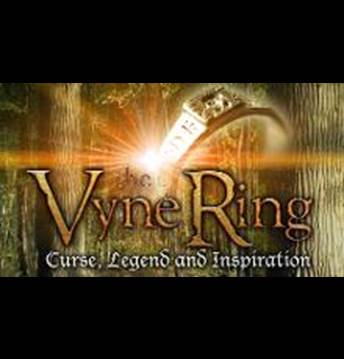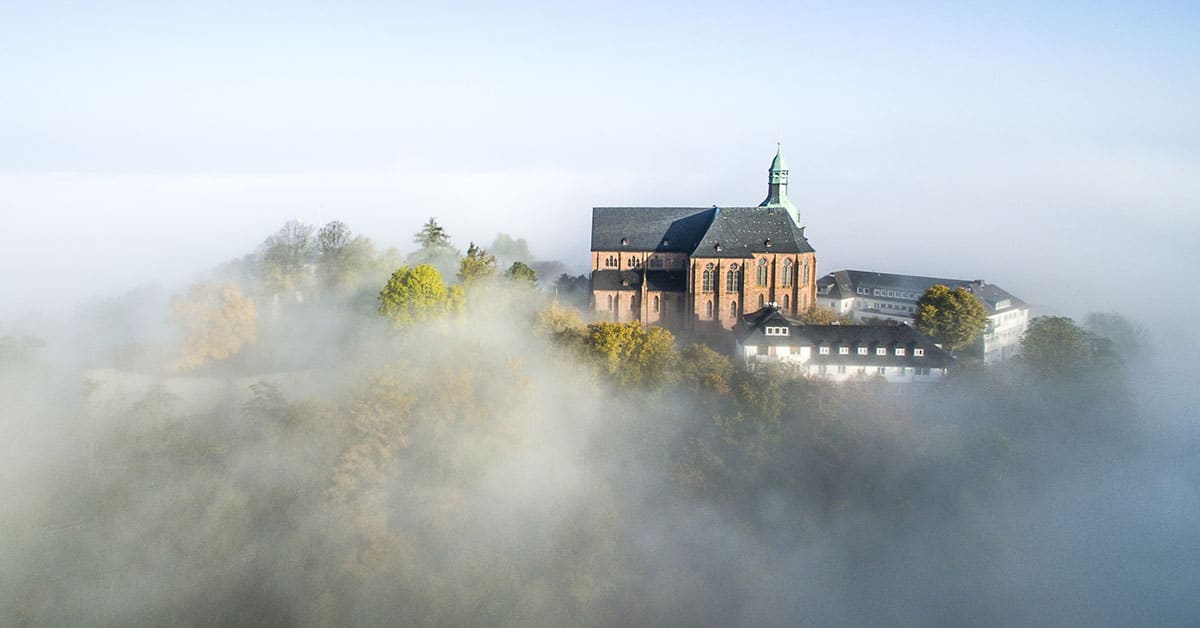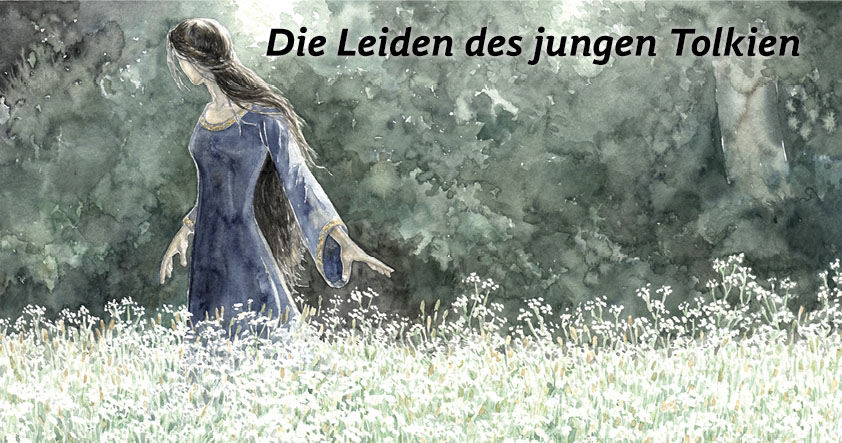English (original) version below
Der National Trust und die britische Tolkiengesellschaft (TS) haben in The Vyne, einem Herrenhaus aus der Tudor-Zeit in Basingstoke südwestlich von London, eine Ausstellung zu einem römischen Ring zusammengetragen. Der Ring soll Tolkien angeblich bei seinen Werken inspiriert haben.
Ob der Ring wirklich als Inspirationsquelle des Einen Rings in Der Herr der Ringe und dem Hobbit herhalten kann, hat eine rege Diskussion in Kreisen von Tolkien Fans und Wissenschaftlern angeregt, aber dies wird nicht der Fokus dieses Artikels sein.* Fakt ist, dass der Ring tatsächlich eine Verbindung zu Tolkien hatte. Wir sprachen mit Dr. Lynn Forest-Hill, Bildungsbeauftragte bei der TS und zuständig für den Austausch mit The Vyne, über eben diese Verbindung und den Ursprung der Ausstellung.
„Die Idee zur Ausstellung kam vom The Vyne Manager“, erzählt Forest-Hill der DTG. „Er kontaktierte mich, in meiner Funktion als Bildungsbeauftragte der TS, vor etwa zwei Jahren mit der Idee einer irgendwie gearteten Zusammenarbeit. Ich habe das an die Kollegen von der TS weitergeleitet, die dann bei der Entwicklung einiger der praktischen Aspekte der Ausstellung mithalfen.“
Tolkiens Verbindung zum Vyne Ring basiert nur auf Indizien. „Man fragte ihn, ob er Forschungen über die Etymologie des Namens Nodens anstellen könne, der auf einem römischen Fluchstein in Lydney in Gloucestershire gefunden wurde. Dieser Stein verflucht einen gewissen Senicianus. Der Fluch wurde erstellt, weil Silvanius einen goldenen Ring verloren hat. Er bietet Nodens die Hälfte des Wertes des Rings an als Teil der Beschwörung. Tolkien kannte also den Namen Nodens in Verbindung mit einem verlorenen Ring und einem Fluch.“ Diese Anfrage kam, laut dem History Blog, 1928 von Archäologe Sir Robert Eric Mortimer Wheeler und seiner Frau und Partnerin Tessa Verney Wheeler, die die Ausgrabungen in Lydney Park durchführten. Tolkiens Ergebnisse wurden 1932 im Anhang des Berichts zur Ausgrabung der Wheelers in einem Aufsatz veröffentlicht.
Weiter erzählt uns Forest-Hill: „Jetzt kommen wir zu den Indizien: Der Vyne Ring, der in Silchester gefunden wurde, trägt eine lateinische Inschrift, die übersetzt wird als ‚Senicianus, lebe gut und gottesfürchtig‘. Man nimmt an, dass Senicianus ein eher seltener römischer Name ist und so ist der Ring möglicherweise der, der von Silvanius verloren und von Senicianus gefunden oder gestohlen wurde, woraufhin letzterer verflucht wurde. Es ist ein eher dünner Zusammenhang, der da zu Tolkiens Ring aufgebaut wird. Der Fluchstein und seine Inschrift hingegen bieten viel überzeugendere und nähere Analogien zum Einen Ring und Gollums Fluch gegen den ‚Dieb‘. Es wird gesagt, dass Tolkien vom Silchester Ring wusste, aber ich bin mir nicht sicher, ob die Beweise dazu genauso überzeugend sind wie die Verbindung zum Lydney Fluchstein.“
Forest-Hill gibt auch zu, dass die Ausstellung durchaus von Tolkiens aktueller Popularität durch Peter Jacksons „Hobbit“-Filme profitiert. „Die Ausstellung rückt die Verbindung Tolkiens allerdings nie in den Vordergrund und stellt keine unhaltbaren Behauptungen auf. Ich weiß nicht, was andere Besucher von der Ausstellung halten werden, aber es gibt einen Zwergenpfad, dem Kinder durch das Haus folgen können und Zwergentunnel auf dem Spielplatz durch die man rennen kann. Es wird nicht erwähnt, dass sie wie Hobbithöhlen aussehen, aber genau das tun sie! Es gibt außerdem eine garstige große geschnitzte Spinne auf dem Grundstück zu entdecken, ebenso wie ‚das Ende der Würmer‘ – eine weitere große geschnitzte Skulptur die aussieht wie ein Lindwurm, der in der Erde verschwindet und wieder auftaucht. Das ist der weitere Umfang an Tolkien-Anklängen, außerhalb der Beschreibung seiner Werke und dem Fluchstein.“
*Wir hören, aus gut unterrichteten Quellen, dass es dazu demnächst eine detaillierte Auseinandersetzung andernorts geben wird …
The Vyne Ring: The Story Behind the Exhibition
The National Trust and the (British) Tolkien Society have put together an exhibition on a Roman ring that allegedly inspired Tolkien at The Vyne, a Tudor mansion in Basingstoke, south-west of London.
Whether the ring really inspired Tolkien to his One Ring from The Lord of the Rings and The Hobbit, has sparked a bit of a discussion among Tolkien fans and scholars but that will not be the focus of this article.* Fact is, the ring actually had some connection to Tolkien. We spoke to Dr. Lynn Forest-Hill, education officer of the TS and responsible for liaising with The Vyne, about this connection and the origin of the exhibition.
“The idea for the exhibition came from the manager of the Vyne,” Forest-Hill told DTG. “He contacted me as TS education officer about two years ago with the idea of some kind of collaboration. I passed this on to other TS colleagues who helped develop some of the practical aspects of the exhibition.”
Tolkien’s connection to the Vyne ring is only circumstantial. “He was asked to delve into the etymology of the name Nodens found on a Roman curse stone at Lydney in Gloucestershire. That stone curses someone called Senicianus. The curse is invoked because Silvanius has lost a gold ring. He offers Nodens half the value of the ring as part of the invocation. So Tolkien knew that the name Nodens in the context of a lost ring and a curse.” This request came, according to the History Blog, in 1928 from archaeologist Sir Robert Eric Mortimer Wheeler and his wife and partner Tessa Verney Wheeler who led the excavations at Lydney Park. Tolkien’s conclusions were published in the essay “The Name ‘Nodens’” in an appendix to the Wheelers’ report on the excavations in 1932.
Forest-Hill continues: “Now we come to the circumstantial bit: The Vyne ring found at Silchester carries its own Latin inscription which translates as ‘Senicianus, live well in God’. It is thought that Senicianus is a rare Roman name and so this ring may be the one lost by Silvanius, found by, or stolen by, Senicianus, who was then cursed. It is a thin connection to make around this ring. The curse stone and its inscription are more persuasive, offering a much closer analogue for the loss of the One Ring and Gollum’s cursing of the ‘thief’. It is said that Tolkien knew of the Silchester ring, but I am not sure that the evidence for this is as sound as his connection with the Lydney curse stone.”
Forest-Hill admits that the exhibition could be seen as jumping on the bandwagon in times of heightened Tolkien popularity through Peter Jackson’s “Hobbit” movies. “The exhibition is however careful to hedge round the Tolkien connection and not make any rash claims. I don’t know what other visitors will think of the exhibition, but there’s a dwarf-trail for the children to follow through the house, and the dwarf tunnels out in the play area for them to run through. It is not mentioned that they look like hobbit holes, although they do! There’s also a nasty great carved spider in the grounds of the house, as well as the ‘ends of worms’ – another large wooden carving of what looks like a worm disappearing into the ground and reappearing. That is the extent of other connections to Tolkien, apart from the description of his work on the curse-stone.”
*We heard, from reliable sources, that there will be a thorough discussion of the issue forthcoming quite soon elsewhere …















